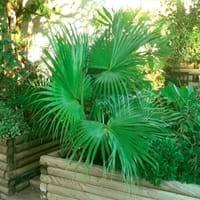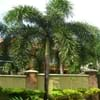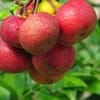Life Span
Perennial
Perennial
Type
Palm or Cycad
Vegetable
Origin
United States, Southeastern United States, South-Central United States
Mexico, Central America, South America
Types
Not Available
Not Available
Number of Varieties
Not Available
Habitat
Floodplains, Lowland, River side, Swamps
Coastal Regions
USDA Hardiness Zone
7-12
11-15
Sunset Zone
H1, H2, 3b, 4, 5, 6, 7, 8, 9, 12, 13, 14, 15, 16, 17, 19, 21, 22, 23, 24
A1, A2, A3, H1, H2, 1a, 1b, 2a, 2b, 3a, 3b, 4, 5, 6, 7, 8, 9, 10, 11, 12, 13, 14, 15, 16, 17, 18, 19, 20, 21, 22, 23, 24
Habit
Clump-Forming
Upright/Erect
Flower Color
Ivory
Yellow
Flower Color Modifier
Bicolor
Bicolor
Fruit Color
Chocolate, Black
Red
Leaf Color in Spring
Green, Gray Green, Dark Green
Green, Dark Green
Leaf Color in Summer
Gray Green, Dark Green
Green, Dark Green
Leaf Color in Fall
Green, Gray Green, Dark Green
Green, Dark Green
Leaf Color in Winter
Olive, Gray Green, Dark Green
Green, Dark Green
Leaf Shape
Circular, dissected, long and linear
Ovate
Plant Season
Spring, Summer, Fall, Winter
Spring, Summer, Fall
Sunlight
Full Sun, Partial Sun, Partial shade
Full Sun
Type of Soil
Clay, Loam, Sand
Loam, Sand
The pH of Soil
Acidic, Neutral, Alkaline
Neutral
Soil Drainage
Poorly Drained
Well drained
Bloom Time
Early Summer
Indeterminate
Tolerances
Wet Site, Salt
Drought
Where to Plant?
Container, Ground
Container, Ground
How to Plant?
Seedlings, Stem Planting
Grafting, Seedlings
Plant Maintenance
Medium
Medium
Watering Requirements
Do Not over Water, Never Over-water, Requires regular watering, Requires watering in the growing season
Needs more water during establishment
In Summer
Lots of watering
Lots of watering
In Spring
Moderate
Moderate
In Winter
Average Water
Average Water
Soil pH
Acidic, Neutral, Alkaline
Neutral
Soil Type
Clay, Loam, Sand
Loam, Sand
Soil Drainage Capacity
Poorly Drained
Well drained
Sun Exposure
Full Sun, Partial Sun, Partial shade
Full Sun
Pruning
Remove damaged leaves, Remove dead leaves
Pinch or prune as they grow to promote branching and bushiness
Fertilizers
fertilize every 2-3 weeks while growing
14-14-14 Fertilizer, Compost
Pests and Diseases
Insects
Anthracnose, Aphids, Red blotch, Rust
Plant Tolerance
Drought
Heat Tolerance, Salt and Soil Compaction
Flowers
Insignificant
Showy
Flower Petal Number
Single
Single
Fragrant Bark/Stem
No
Yes
Foliage Texture
Bold
Medium
Foliage Sheen
Matte
Matte
Attracts
Birds
Aphids, Not Available, Squirrels
Allergy
Avoid during Pregnancy
Stomach pain, Vomiting
Aesthetic Uses
Beautification, Landscape Designing, Showy Purposes
Used in parkland
Beauty Benefits
Not Available
Anti-ageing, Blackheads, Reduce Bruises
Environmental Uses
Air purification, Food for insects, Prevent Soil Erosion
Shadow Tree, Soil protection
Medicinal Uses
Asthma, Baldness, Cold, Cough, Migraines, Sore throat
Dehydration, Diabetes, Diarrhea, Nutrients, Weight loss
Part of Plant Used
Whole plant
Fruits
Other Uses
Decoration Purposes, Employed in herbal medicine, Showy Purposes, Used as Ornamental plant, Used for its medicinal properties
Application in Handicrafts, Food for animals, Showy Purposes
Used As Indoor Plant
Yes
No
Used As Outdoor Plant
Yes
Yes
Garden Design
Bog Garden, Feature Plant, Foundation, Hedges, Mixed Border, Tropical
Edible, Herb, Vegetable
Botanical Name
SABAL minor
Manilkara zapota
Common Name
Bush Palmetto, Dwarf Palmetto, Little Blue Stem, Swamp Palmetto
sapodilla , chikoo, Sapota
In Hindi
बौना पल्मेट्टो
चीकू
In German
Zwerg Palmetto
Breiapfelbaum
In French
Palmetto nain
Sapotillier
In Spanish
Palmetto enano
chicle
In Greek
Νάνος Palmetto
sapodilla
In Portuguese
Palmetto anão
sapodilla
In Polish
Dwarf Palmetto
Pigwica właściwa, sapodilla
In Latin
Pumilio Palmetto
sapodilla
Phylum
Magnoliophyta
Magnoliophyta
Class
Liliopsida
Magnoliopsida
Family
Arecaceae
Sapotaceae
Clade
Angiosperms, Commelinids, Monocots
Angiosperms, Asterids, Eudicots
Tribe
Not Available
Sapoteae
Subfamily
Coryphoideae
Sapotoideae
Season and Care of Dwarf Palmetto and Sapodilla
Season and care of Dwarf Palmetto and Sapodilla is important to know. While considering everything about Dwarf Palmetto and Sapodilla Care, growing season is an essential factor. Dwarf Palmetto season is Spring, Summer, Fall and Winter and Sapodilla season is Spring, Summer, Fall and Winter. The type of soil for Dwarf Palmetto is Clay, Loam, Sand and for Sapodilla is Loam, Sand while the PH of soil for Dwarf Palmetto is Acidic, Neutral, Alkaline and for Sapodilla is Neutral.
Dwarf Palmetto and Sapodilla Physical Information
Dwarf Palmetto and Sapodilla physical information is very important for comparison. Dwarf Palmetto height is 240.00 cm and width 240.00 cm whereas Sapodilla height is 150.00 cm and width 60.00 cm. The color specification of Dwarf Palmetto and Sapodilla are as follows:
Dwarf Palmetto flower color: Ivory
Dwarf Palmetto leaf color: Green, Gray Green and Dark Green
Sapodilla flower color: Yellow
- Sapodilla leaf color: Green and Dark Green
Care of Dwarf Palmetto and Sapodilla
Care of Dwarf Palmetto and Sapodilla include pruning, fertilizers, watering etc. Dwarf Palmetto pruning is done Remove damaged leaves and Remove dead leaves and Sapodilla pruning is done Pinch or prune as they grow to promote branching and bushiness. In summer Dwarf Palmetto needs Lots of watering and in winter, it needs Average Water. Whereas, in summer Sapodilla needs Lots of watering and in winter, it needs Average Water.





